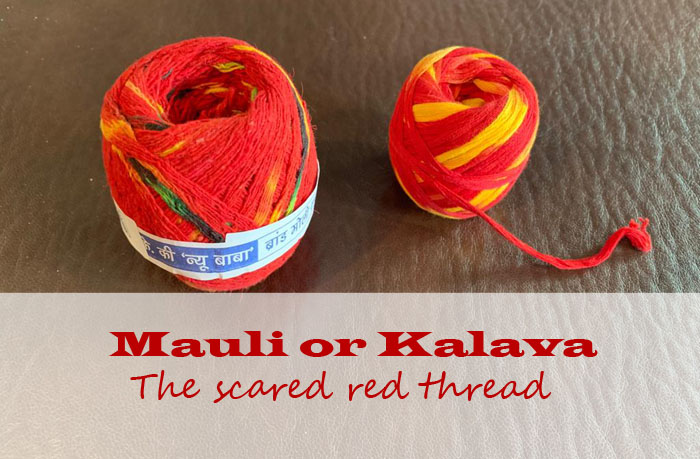Significance Of Mauli (Kalava)

Mauli or Kalava also called Rakshai or Charadu is the sacred red thread tied on the wrist before the start of any ritual, prayer, or religious ceremony.
Mauli is made of cotton mostly in red and small bits of yellow color. Yellow colors represent spiritual energy, while red has the properties to stimulate spiritual energy, hence it holds a miraculous power to save you from evil energy.
In India, one can easily observe a maximum number of people moving with that red-colored string on their right hands. The ritual thread is traditionally worn on the right wrist or arm by the males and on the left by the females.
The basic significance is to get blessings from God. The thread helps preserve or imbibe those blessings when it is tied around one’s wrist during the ceremony. It is tied with faith in God and asking him/her to save us from all evil outside in the world.
In Hinduism many scripts have many religious stories about “Kalava” In the Mahabharata, Draupadi tied a Kalava on the right hand of Abhimanyu before his last day of the war for divine protection. He was not defeated by many warriors as long as he wore the “Kalava” on his right hand.
Lord Krishna wanted his death, as Draupadi was evil in his previous life. Krishna thus sent a mouse to cut his Kalava and soon after, Abhimanyu was killed. Another legend has it that Lord Vishnu during his incarnation as Vamana tied a red thread on the hands of King Bali to grant him immortality and to rule the netherworld.
It is believed that our complete body is controlled by the wrist vein. So, if we tie Mauli on the wrist, it helps regulate the body’s blood circulation. It helps to purify our thoughts and turn them into positive ones and keep the evil and negative energy away.






